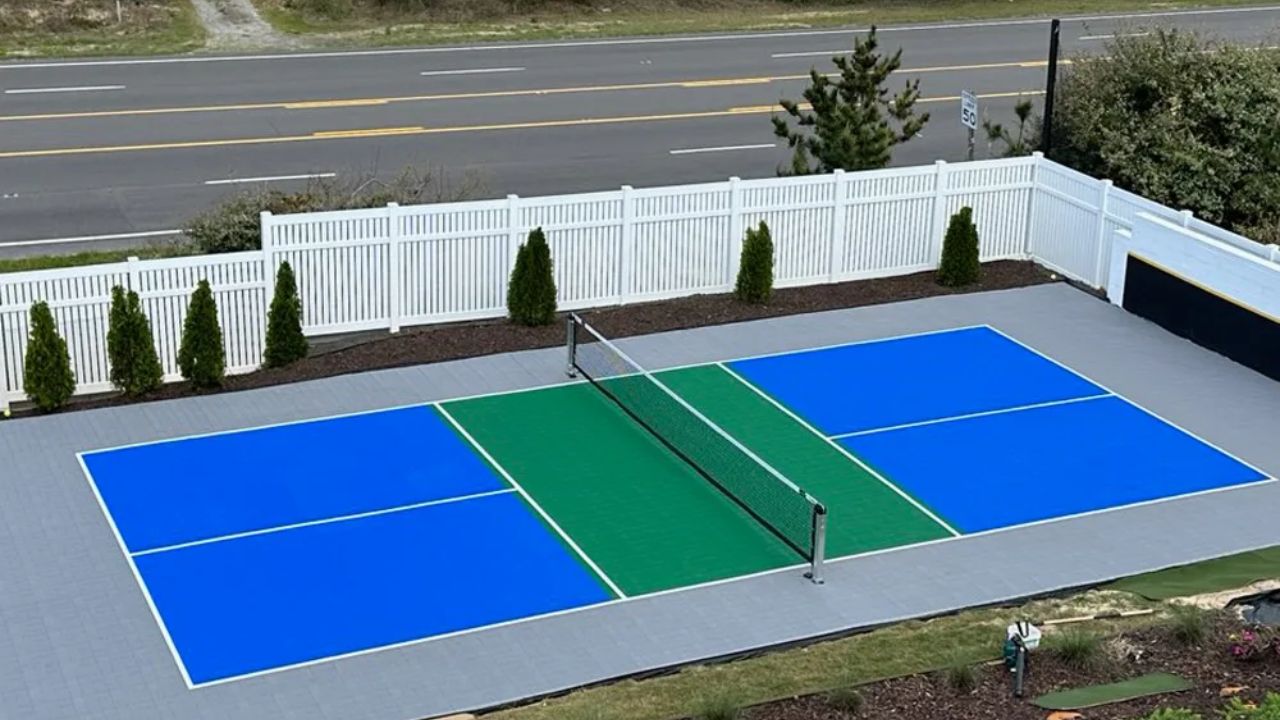The increasing popularity of pickleball demands that courts follow regulation standards. The USA Pickleball Association (USAPA) establishes every requirement for building pickleball courts through specifications that address floor standards. The USAPA-compliant pickleball floor design ensures recreational and professional players access a safe and consistent high-quality surface for their games. The knowledge of USAPA standard | pickleball floor features enables users to pick suitable materials and set them up for their best gameplay experience.
Ball Bounce and Consistency
The regulation pickleball floor must have the essential ability to maintain a steady ball bounce. The playing surface needs to be strong enough to deliver expected ball rebounds that maintain fair competition. A court surface that is not flat or even will produce unpredictable ball movement, which negatively impacts shot precision. A USAPA-compliant court requires that its bounce height meets standard requirements through a controlled pickleball drop from specified heights. All players can expect equal performance across the whole court area because of these specifications.
Court Dimensions and Markings
A correctly built pickleball court must follow the official USAPA dimensions for its total playing space. The floor surface needs to have distinct and precise lines indicating the kitchen area and service boxes and baselines. The markings need to maintain their durability alongside high visibility and resistance to wear to enable players to see court boundaries easily. Indoor facilities can use removable court lines as long as they stay secure without disrupting gameplay, but they should follow official USAPA dimensions.
Cushioning and Shock Absorption
The USAPA requires pickleball floors to provide sufficient cushioning together with shock-absorbing properties to protect players' joints and muscles. The sub-layer of rubberized padding beneath indoor hardwood or synthetic surfaces reduces the strain on players' feet and knees. Outdoor courts receive cushioned acrylic coatings or modular tile systems which deliver comfort features while maintaining ball response capabilities. Adequate floor cushioning helps extend player endurance by decreasing fatigue and minimising injuries that occur during long matches.
Durability and Maintenance
The durability requirements for regulation pickleball floors must be exceptional because they need to endure heavy usage and different weather patterns, primarily in outdoor settings. Long-lasting performance emerges from flooring materials which include reinforced acrylic coatings in combination with polymer-based flooring and sealed hardwood. The preservation of flooring integrity depends on regular maintenance practices which include court line repainting and surface resurfacing and sweeping operations. A properly maintained court surface maintains its grip while preventing damage to reduce the need for replacement of the playing surface.
Indoor vs. Outdoor Flooring Considerations
The materials used for flooring in indoor and outdoor pickleball courts need to be different because of their environmental exposure. The flooring materials used in indoor courts consist of wooden gymnasium floors together with rubberised synthetic surfaces and modular sports tiles because they deliver excellent grip alongside flexible performance. Outdoor court flooring needs materials such as asphalt concrete and weather-resistant tile systems to handle temperature changes and moisture exposure. USAPA-compliant outdoor floors get an acrylic finish coating, which safeguards against fading and surface deterioration while maintaining uniform playability.
Safety and Slip Resistance
A USAPA-compliant pickleball floor requires safety as its fundamental element. A proper surface texture must be present to minimise slipping or skidding hazards. The combination of flooring surfaces that are too smooth increases the risk of accidents, and the combination of surfaces that are too rough results in skin abrasions when players fall. The USAPA requires floor surfaces to have slip-resistant features through the application of textured materials and slip-resistant coatings, which enable safe footing without restricting player mobility. A court free of debris and clean conditions enhances safety for players during their games.
Noise Reduction Properties
Noise reduction serves as an important consideration during the design process of pickleball courts in specific locations. The combination of cushioned acrylic surfaces with modular sports tiles reduces the noise that occurs from balls hitting the floor and players moving across the court. The noise reduction properties benefit residential areas and indoor courts, which share space with multiple facility uses. USAPA-compliant pickleball flooring options that reduce noise enable players to enjoy their games without creating disturbances in surrounding areas.
Conclusion
USAPA-compliant pickleball floors combine safety features with durability features and playability features to meet official standards. A suitable playing surface for pickleball courts needs to deliver predictable ball bounce alongside suitable friction and precise markings, regardless of indoor or outdoor settings. The combination of shock-absorbing materials and weather-proof construction elements delivers both player comfort and an extended lifespan. USAPA flooring guidelines allow pickleball courts to achieve high standards which satisfy casual and competitive players.


